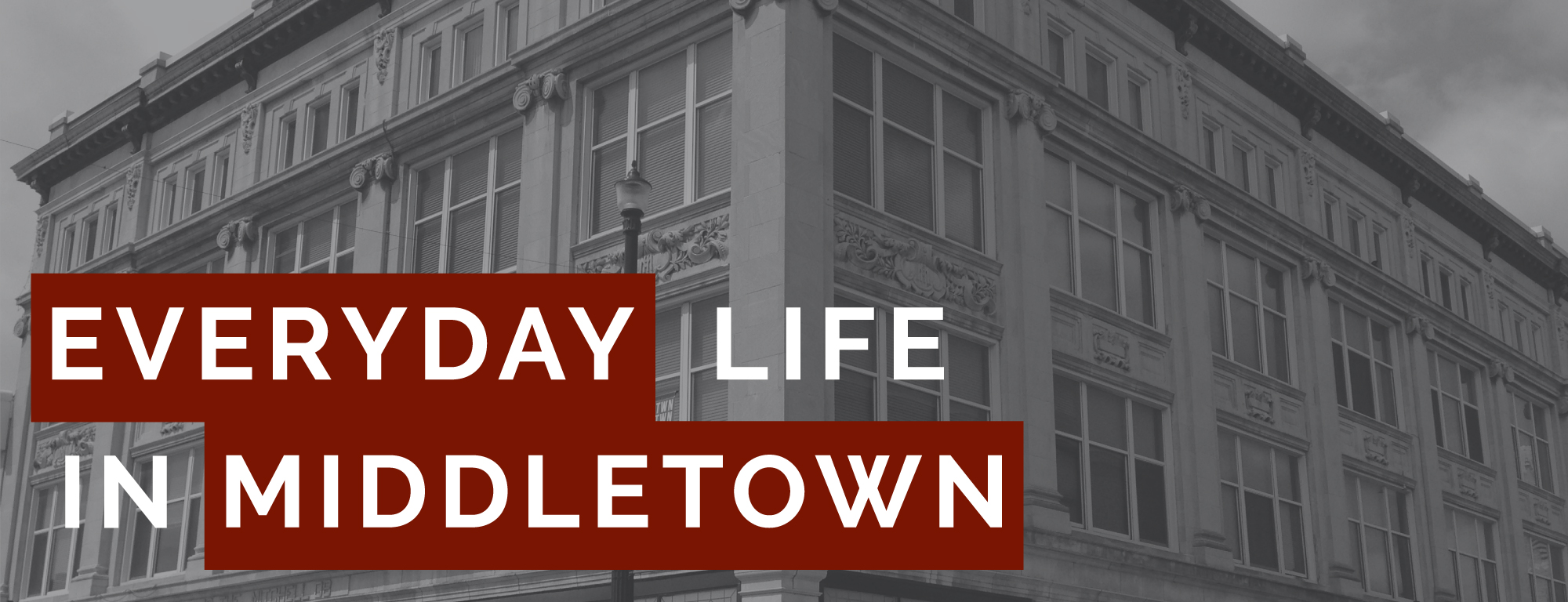Last winter, when we asked our volunteer writers to reflect on Muncie as a place, one message came through loud and clear: feelings about Muncie are profoundly mixed. Not only do reactions differ depending on where you live, what you do, and how you came to be here in the first place; even individual people have widely varying, often conflicting attitudes about our city. Optimists acknowledge the profundity of economic and social challenges. Pessimists note the low cost of living or the relative ease of getting around. Most people live somewhere in the middle.
Indeed, one recurring observation in the directives is that Muncie feels like more than one place. A respondent who works in Muncie but lives in rural Delaware County titled his directive “My Muncies.” A transplant from the south, noting what he sees as the gulf between Muncie boosters and the town’s poor residents, observed, “These people live in two different Muncies.”
Taking our cue from our writers, we have decided to highlight this multiplicity of perceptions and attitudes in a series on our blog, to begin next Thursday and run weekly through the month of August.
“Four Muncies” will feature, in their entirety, four of the most interesting responses to the Feb. 12 directive, which asked “What do you think and feel about Muncie?” and followed up with a series of questions that probed each writer’s history with the city, their sense of belonging (or lack of belonging), their idea of what others think about Muncie, and their expectations for the city’s future.
We chose to feature these four directives precisely because they offer a multi-perspectival view of Muncie in the present, individually and together. Each of the writers is observant and eloquent about how it feels to them to live here, and each registers, with differences of perspective, the economic and social divides and problems the city faces. None of the four could be described as typical (whatever that means), but in their dramatically divergent takes on Muncie they nonetheless reveal the contours of a shared emotional landscape: Muncie is a town that is known for its problems, and living here means situating yourself in relation to its history and its uncertain future.
If you read the directives in their entirety (which we urge you to do!), you’ll see that, despite the wide variance in opinions, certain elements repeat insistently: the sense of the city as divided (geographically, economically, racially, socially); the fear that its best days may be behind it (or a steely dismissal of this fear); a perception of the city’s government as historically corrupt; an awareness that (for better and for worse) the university and the hospital are economic and cultural drivers of the city’s present.
Thus the directives, and especially the rich ones we’ve selected for the blog series, reveal what cultural critics have called a “structure of feeling” among people who live and work in Muncie. Whether you are optimistic or pessimistic by nature, conservative or liberal, a committed native or an unrooted transplant, your feelings about Muncie are going to take shape around this set of core concerns, and crystallize around a sense of past civic losses and the kinds of future that might grow out of present conflicts and efforts.
In the next four weeks, you’ll meet:
The cheerleader, an EDLM writer who focuses consistently on the positive, on what she describes as “a giving spirit, the way neighbors come together.” Personifying Muncie, she writes, “She’s been mistreated and down on her luck, but I always root for the underdog.”
The reluctant transplant, who views his five-year residency in Muncie as a “practice round” for the life he is planning for back in his home town in the southern United States. As something of an admitted outsider, he views both Muncie’s culture of boosterism and its nay-sayers critically, and likens the town to an old-growth forest that still needs to burn off some of its dead wood.
The neutral mind, who even-handedly enumerates what pleases her (small-town friendliness, affordability, ease of living) and what worries her (inequality, segregation) in Muncie. She values above all Muncie’s working-class unpretentiousness–“I wouldn’t want Muncie to feel exclusive,” she writes–and has modest but positive expectations for its future.
The country dweller, who lives in the rural Delaware County and commutes to Muncie for work, volunteerism, and cultural activities. His “Muncie” is thus both urban and rural, and marked by comfort (his house is a space of “refuge and safety”) and culture (he frequents Ball State and other theater offerings) even as it is shot through with traumatic memories of the anti-gay verbal abuse and vandalism he has endured. To him, living here means going away, periodically, for a spiritual recharge, so that he can “light a candle from the fires of paradise and carry it back with me to the Muncies I inhabit.”
We hope you enjoy, and invite you to share your thoughts and comments as you read these directives.
–Patrick Collier


